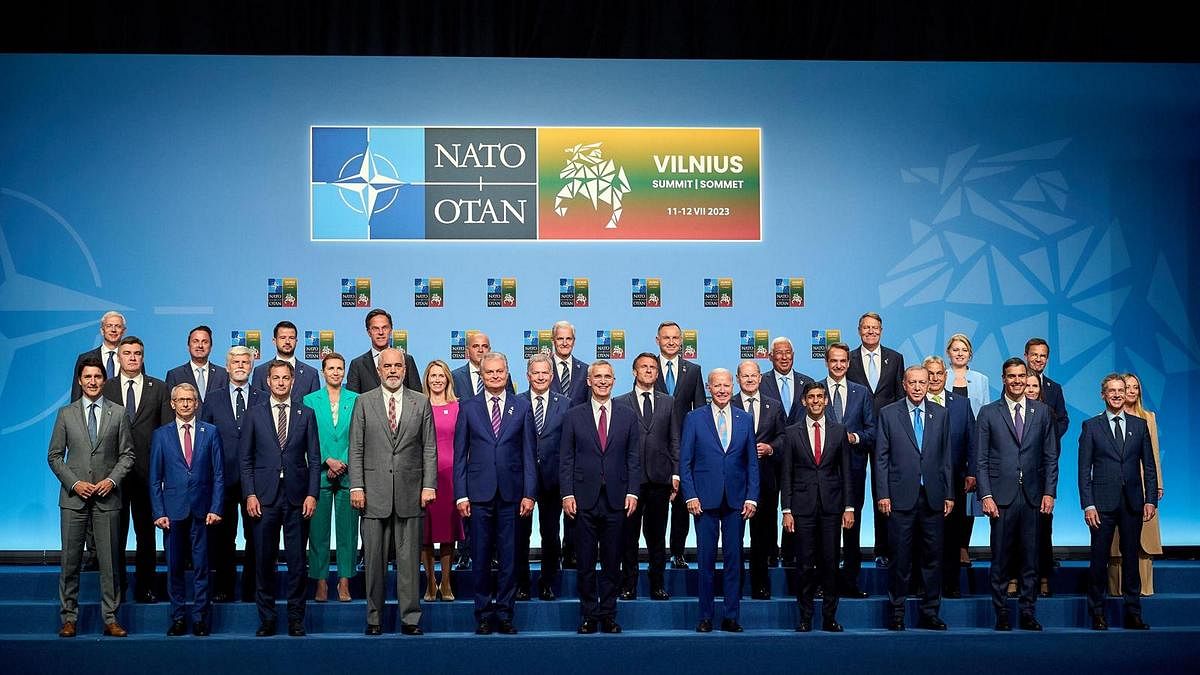Key Geopolitical Dynamics: Nato Summit

Nato summit – NATO’s eastern flank has become increasingly important in recent years due to Russia’s annexation of Crimea and its ongoing aggression in Ukraine. The region is home to several NATO member states, including Poland, Romania, and the Baltic states, which are all vulnerable to Russian military pressure.
The NATO summit brought together world leaders to discuss the ongoing conflict in Ukraine. Senator Mark Warner , a key figure in the discussions, emphasized the need for a strong and united response from the alliance. The summit concluded with a reaffirmation of NATO’s commitment to defending its members and upholding the principles of democracy and freedom.
In response to the evolving security landscape, NATO has taken several steps to strengthen its eastern flank. These include increasing the number of troops stationed in the region, conducting more military exercises, and upgrading air and missile defense systems. NATO has also provided military assistance to Ukraine, which is not a member of the alliance but is facing Russian aggression.
The NATO summit, a gathering of world leaders to discuss pressing issues facing the alliance, has been the focus of much attention lately. One notable figure who has weighed in on the summit is Marco Rubio , a Republican senator from Florida.
Rubio has been a vocal supporter of NATO and has urged the United States to maintain its commitment to the alliance. He believes that NATO is essential for maintaining stability in Europe and deterring Russian aggression.
Challenges Posed by Russia’s Aggression in Ukraine
- The annexation of Crimea and the ongoing conflict in eastern Ukraine have raised concerns about the security of other NATO member states in the region.
- Russia’s military buildup near the Ukrainian border has further heightened tensions and raised the risk of a wider conflict.
- Russia’s use of hybrid warfare tactics, such as cyberattacks and disinformation campaigns, has also been a challenge for NATO.
NATO’s Response to the Evolving Security Landscape
- NATO has increased the number of troops stationed in the eastern flank, including the deployment of four multinational battlegroups to Poland, Estonia, Latvia, and Lithuania.
- NATO has conducted more military exercises in the region, including the largest exercise in its history, Defender Europe 2021.
- NATO has upgraded air and missile defense systems in the region, including the deployment of the Patriot missile system to Poland and Romania.
- NATO has provided military assistance to Ukraine, including the provision of weapons and training.
Strengthening NATO Capabilities
NATO is taking steps to enhance its military readiness and deterrence capabilities in response to the evolving security landscape. The Alliance is investing in new technologies, increasing defense spending, and strengthening its collective defense posture.
Modernizing NATO’s Defense Systems
NATO is modernizing its defense systems to keep pace with the rapidly evolving technological landscape. The Alliance is investing in artificial intelligence, cyber defense, and other cutting-edge technologies to enhance its ability to deter and defend against threats.
For example, NATO is developing a new air defense system that will be able to track and intercept incoming missiles and aircraft. The system will be integrated with NATO’s existing air defense systems and will provide a more robust defense against aerial threats.
Increased Defense Spending by NATO Members, Nato summit
NATO members are increasing their defense spending in order to meet the challenges of the 21st century. The Alliance has set a goal of each member spending 2% of its GDP on defense by 2024. This will represent a significant increase in defense spending for many NATO members.
The increased defense spending will allow NATO to invest in new capabilities, such as the air defense system described above. It will also allow NATO to maintain a high level of readiness and to respond to emerging threats.
Transatlantic Security Cooperation

Transatlantic security cooperation, a cornerstone of NATO’s foundation, has been critical in safeguarding the security and stability of Europe and North America. This enduring partnership has provided a platform for joint defense, political coordination, and crisis management.
Role of the United States
The United States, as a preeminent NATO member, plays a pivotal role in maintaining the alliance’s cohesion. Its military strength, technological prowess, and economic resources have been instrumental in deterring potential adversaries and assuring allies of its commitment to collective defense.
Challenges and Opportunities
While transatlantic security cooperation remains strong, it faces challenges such as shifting geopolitical dynamics, the rise of new threats, and the evolving nature of warfare. Deepening cooperation between NATO and its partners requires addressing these challenges while capitalizing on opportunities for collaboration in areas such as cyber defense, counterterrorism, and emerging technologies.